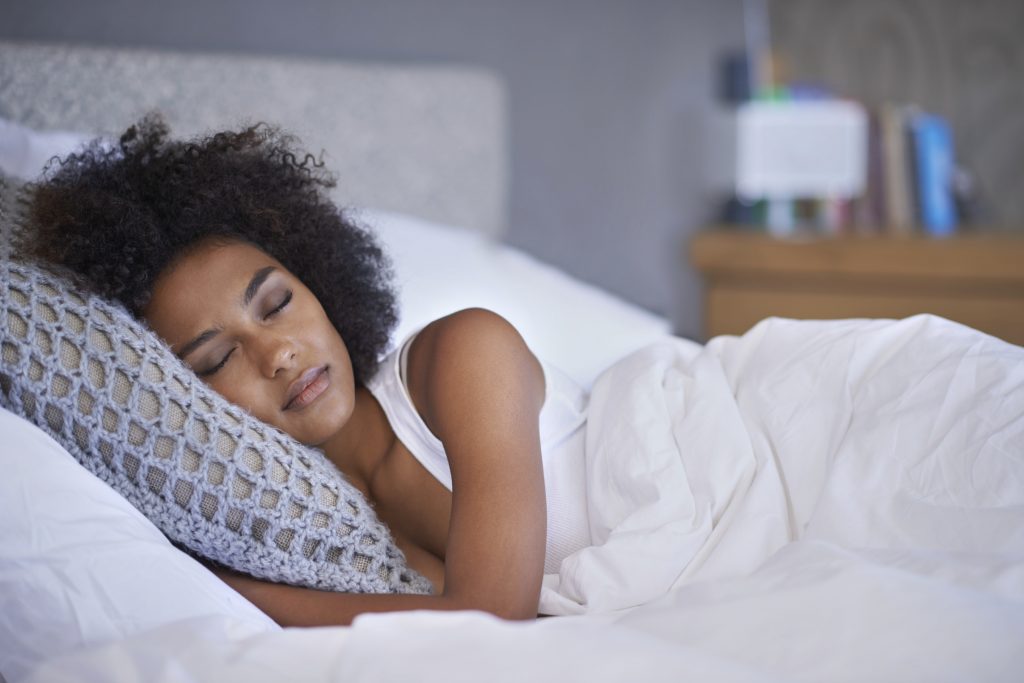 If you aren’t sleeping well, your sleeping position could be to blame. Although you might be a loyal side, back, or stomach sleeper, using the wrong mattress or failing to support your body with pillows might cause a little unnecessary tossing and turning. Here are some helpful tips to help you to make every position easy on your body, so that you can sleep soundly each night.
If you aren’t sleeping well, your sleeping position could be to blame. Although you might be a loyal side, back, or stomach sleeper, using the wrong mattress or failing to support your body with pillows might cause a little unnecessary tossing and turning. Here are some helpful tips to help you to make every position easy on your body, so that you can sleep soundly each night.
For Back Sleepers
Although research has shown that sleeping on your back can help to reduce facial wrinkles, back sleeping can cause problems with sleep apnea and even back pain. Unless your mattress is supportive enough to prop up your spine, sleeping flat on your back could cause your muscles to strain throughout the night, causing stiffness or soreness.
To reduce back pressure, make sure that your mattress is comfortable and supportive. If you notice that your mattress has pressure divots or unsupportive springs, visit a mattress store, such as Best Mattress, to see about investing in a new version. Newer mattresses with memory foam technology offer a soft, supple surface while underlying layers of supportive foam provide the support you need to keep your back healthy and strong.
If your mattress is in decent shape, but you experience discomfort at night, you should also try propping up your knees with a sleeping wedge or a few pillows while you sleep. Sleeping wedges are designed to fit comfortably underneath your knees, and they usually contain a removable cover that you can wash when you need to. If you use pillows to support your legs, make sure to choose varieties that are firm enough that they won’t slowly deflate overnight. Down pillows work well, since the material compresses, but won’t flatten completely.
For Side Sleepers
Side sleeping is recommended by most chiropractors and family doctors because it allows the body to stretch freely throughout the night. Because side sleeping encourages circulation and also takes pressure off of the back for people with larger mid-sections, side sleeping is usually prescribed to pregnant women or people who suffer from back injuries.
If you sleep on your side, place a pillow between your knees to keep your back comfortable. Without the pillow, the weight of your upper leg can strain your back and cause soreness the next day. Also, since sleeping on the same side night after night can actually put pressure on your organs, try to alternate sides. Never place your arm directly under your pillow, because it can restrict blood flow and lead to nerve damage.
Use a pillow that is supportive enough to keep your head and spine in a straight line, and don’t be afraid to switch sides of the bed so that you alternate your sleeping side.
Stomach Sleepers
Because stomach sleepers face downwards as they sleep, they tend to have fewer problems with sleep apnea, which can occur when the tongue falls backwards into the throat. However, stomach sleeping can be hard on your back and neck, which is why you need to make sure to use the right pillow.
Always use an extremely soft, flat pillow if you sleep on your stomach. Using pillows that are too perky could cause your neck to jut upwards as you sleep, which can strain your back. If you experience lower back pain when you sleep on your stomach, try putting a pillow underneath your hips to prop up the area.
For more information about choosing pillows and sleeping accessories to suit your sleeping style, visit a Best Mattress near you.
